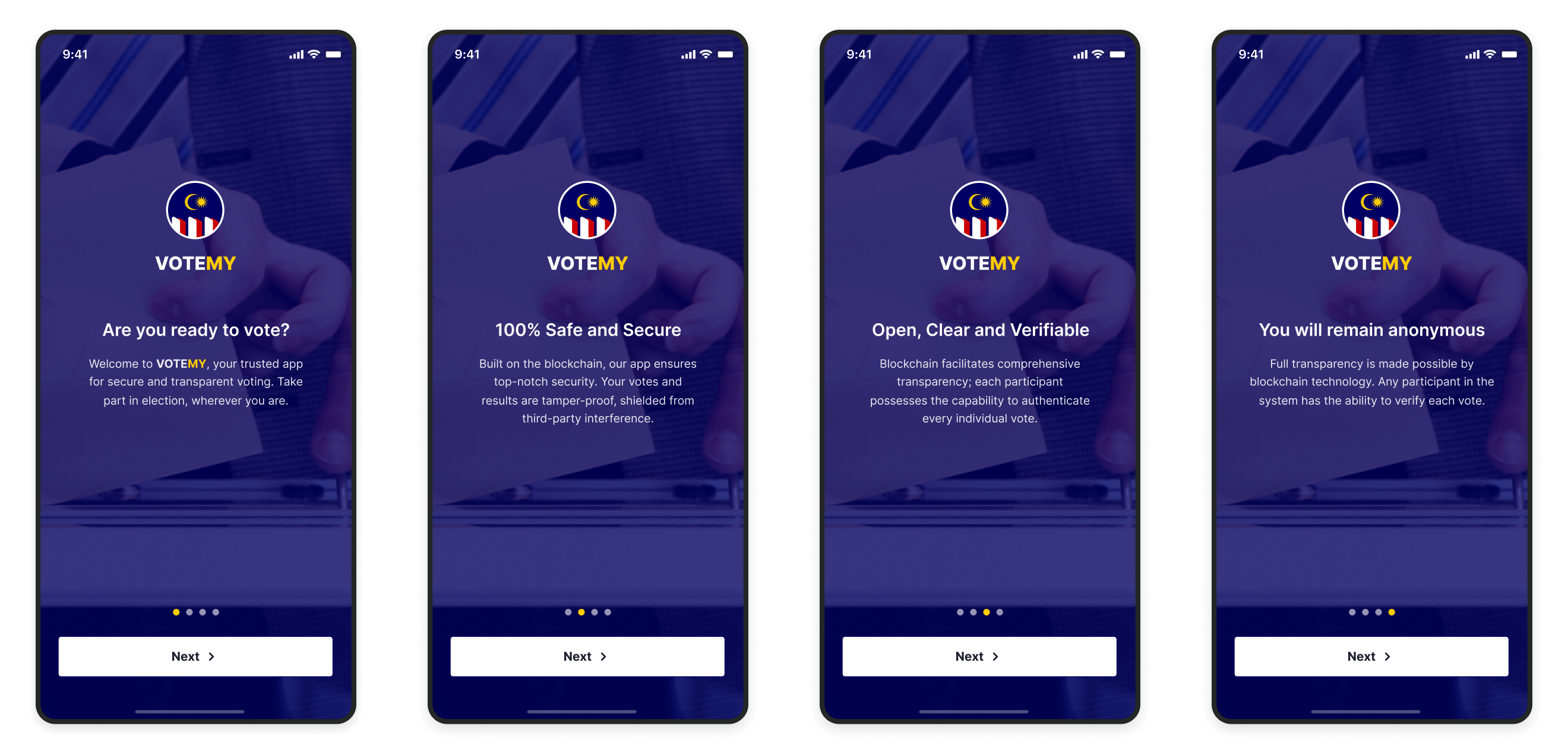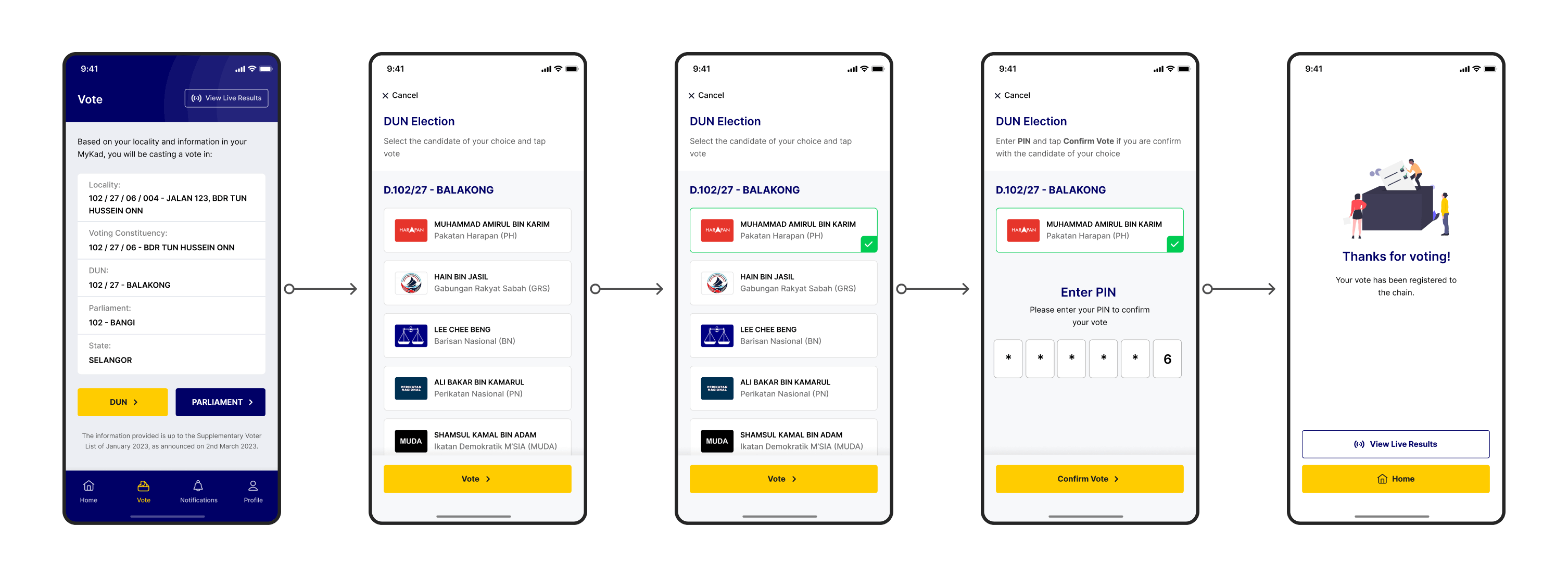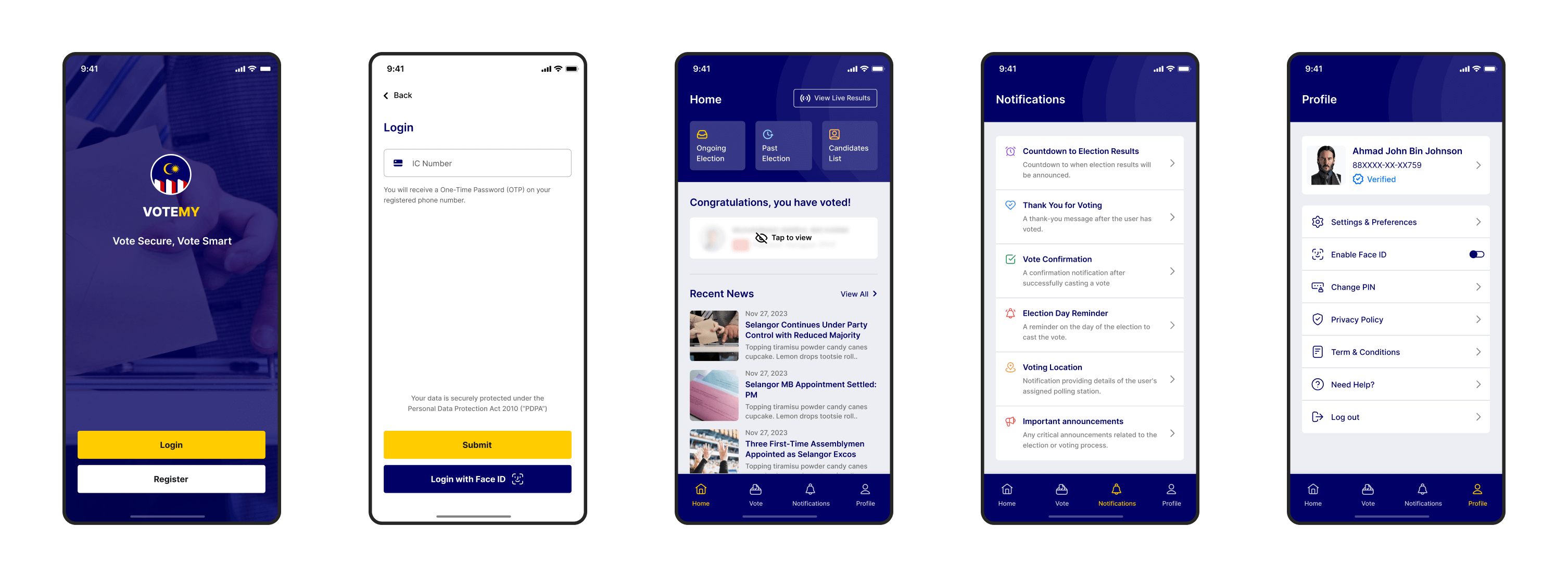VoteMy: A Blockchain Voting App Case Study
Designing for Trust in a Zero-Error Environment
*What you're about to see is a case study I've compiled for a design challenge and a product design project. Please note that it's not a fully functional product yet.Overview
In a world where trust and transparency are vital to the democratic process, blockchain technology emerges as a beacon of hope.
This case study explores how our blockchain-based voting app revolutionized the way elections are conducted, ensuring security, integrity, and inclusivity.
The Problem: The "Trust Paradox"
The Challenge: The "Black Box" Anxiety
- Convenience vs. Security: Users want voting to be easy, but if it feels too easy (like liking a Facebook post), they don't trust that their vote is secure.
The Opportunity
- To design a frontend experience that leverages the immutability of blockchain (backend) while providing a UI that feels institutional, deliberate, and transparent (frontend).
The Goals
Designing a blockchain voting app is a significant step in redefining the democratic process. In this discussion, we'll explore the goals guiding the development of this secure, transparent, and user-friendly system for elections. These also could include:
- To ensure a secure and tamper-resistant environment for vote recording. When a vote is on the blockchain, it's highly resistant to changes or manipulation without network participants' agreement, boosting trust in the voting process.
- To create a fresh voting experience by utilizing online and mobile applications. This inventive approach aims to revolutionize the conventional voting process, making it more accessible, convenient, and user-friendly.
In conclusion, these goals ensure a secure and tamper-resistant voting environment. The blockchain-based system makes altering votes nearly impossible without network agreement, boosting trust in elections.
The Approach
Strategic Decisions: Friction as a Feature Unlike a consumer app where "frictionless" is the goal, in voting, friction establishes validity.
The "Trust Friction"
- Why: We intentionally added a 12-hour delay. This is critical because instant access in high-stakes voting creates suspicion. The wait signals that a rigorous background check is in progress, proving the platform isn't overrun by bots.
Humanizing the Blockchain
- Why: The app is built on complex tech, but the interface is simple enough for non-technical users. We stripped confusing words like "Hashing" and instead used common language to ensure everyone can vote easily.
The User Flow
The user flow in a blockchain voting app is like a digital path for voters during an election. It's central to the app's design, ensuring a smooth, secure, and trustworthy voting experience. The user flow, demonstrating simplified voting and increased trust in democracy.
Simplifying Voter Registration
The primary objective is to create a user-friendly registration process that caters to individuals of all ages (eligible to vote). The aim to make the registration process accessible and straightforward, ensuring that voters from different generations and backgrounds can easily navigate it.
Identity First Architecture
- The flow requires a "1-to-1" device binding (OTP + ID). This isn't just a login; it is the digital equivalent of showing your ID card at a polling station.
- Goal: To eliminate the possibility of "Ballot Stuffing" (System integrity).
Ensuring Secure Vote Casting
This streamlined process has been designed to ensure that casting a vote is both easy to understand and highly secure for all users. By breaking down the steps involved, the aim is to make the voting experience as straightforward as possible.
The "Double-Lock" Confirmation
- I introduced a deliberate "Confirm with PIN" step at the end of the voting flow.
- UX Rationale: This prevents accidental taps (Error Prevention) and provides a psychological "Ritual of Closure"—mimicking the physical act of dropping a ballot into a box.
Additional Screens: Beyond Registration and Voting
In the context of a blockchain voting app, exploring additional screens goes beyond the core processes of registration and casting votes. These screens encompass various functionalities and features that enhance the overall user experience.
Looking Forward: Deployment Strategy & Ethics
If this system were to move from concept to pilot, the product roadmap would focus strictly on safety and inclusion:
Critical Success Metrics
- Trust Score: Qualitative sentiment analysis (Post-vote survey: "Did you feel your vote was secure?").
- Error Rate: % of users who attempt to vote but fail (measures Accessibility).
- Audit Trail: 100% match between UI confirmation and Blockchain ledger entries.
Risk Mitigation (The "What Ifs")
- Coercion Resistance: QHow do we ensure someone isn't standing over the user's shoulder? (Future feature: Time-limited sessions).
- Digital Divide: How do we ensure someone isn't standing over the user's shoulder? (Future feature: Time-limited sessions).




